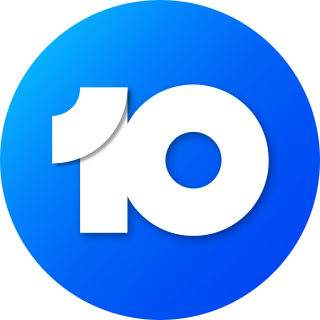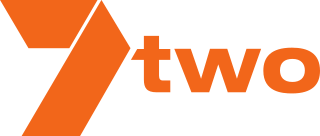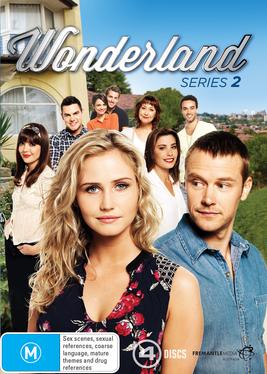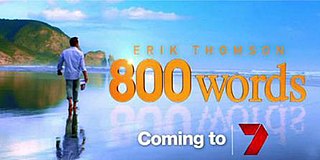
Network 10 is an Australian commercial television network owned by Ten Network Holdings, a division of the Paramount Networks UK & Australia subsidiary of Paramount Global. One of five national free-to-air networks, 10's owned-and-operated stations can be found in the state capital cities of Sydney, Melbourne, Brisbane, Adelaide and Perth while affiliates extend the network to regional areas of the country.

The Seven Network is a major Australian commercial free-to-air television network. It is owned by Seven West Media Limited, and is one of five main free-to-air television networks in Australia. The network's headquarters are located in Sydney.

Television in Australia began experimentally as early as 1929 in Melbourne with radio stations 3DB and 3UZ, and 2UE in Sydney, using the Radiovision system by Gilbert Miles and Donald McDonald, and later from other locations, such as Brisbane in 1934.
OzTAM is an Australian audience measurement research firm that collects and markets television ratings data. It is jointly owned by the Seven Network, the Nine Network and Network Ten, and is the official source of television ratings data for all metropolitan television in Sydney, Melbourne, Brisbane, Adelaide and Perth as well as subscription services on a national basis.
WOW is an Australian television station licensed to WIN Television, serving regional and remote Western Australia. The station officially commenced transmissions on 26 March 1999 as the second commercial regional broadcaster in Western Australia, alongside former monopoly, Golden West Network.
Television news ratings in Australia are collected by three main organisations: OzTAM in metropolitan areas, Regional TAM in regional areas serviced by three commercial television networks, and in areas with two commercial networks, Nielsen Media Research Australia. Ratings are collected for 40 weeks during the year, excluding a two-week break during Easter and ten weeks over summer. The majority of locally produced news and public affairs top the rating charts week after week.

7two is an Australian free-to-air digital television multichannel, which was launched by the Seven Network on 1 November 2009.

13th Street was an Australian television channel which specialised in airing action and suspense programmes. The channel was owned by NBC Universal and was launched on 15 November 2009 as part of Foxtel's Next Generation launch. It launched on Fetch TV in 2017 as part of Fetch TV's channel pack revamp.
This is a list of Australian television events and premieres which occurred, or are scheduled to occur, in 2012, the 57th year of continuous operation of television in Australia.

The second season of the Australian drama television series Wonderland, began airing on 15 October 2014 on Network Ten and will conclude on 19 November 2014. The season airs on Wednesdays at 8:30pm.

800 Words is a comedy-drama television series, co-produced by South Pacific Pictures and Seven Productions for the Seven Network.
9Life is an Australian free-to-air digital television multichannel owned by Nine Entertainment. The channel airs mostly foreign lifestyle and reality programs, with the channel having a licensing agreement with Discovery Inc. for the distribution of many formats.
High-definition television in Australia is available via cable, IPTV, satellite and terrestrial television. The first high-definition broadcasts began in 2001 and since then the number of channels available to view has grown to a maximum of 27 that can be viewed on pay-TV service, Foxtel.
This is a list of Australian television-related events, debuts, finales, and cancellations that are scheduled to occur in 2017, the 62nd year of continuous operation of television in Australia.
True Story with Hamish & Andy is an Australian television series starring radio and television hosts Hamish Blake and Andy Lee, that was first aired on 5 June 2017. This is their third series for the Nine Network.
This is a list of Australian television-related events, debuts, finales, and cancellations that are scheduled to occur in 2019, the 64th year of continuous operation of television in Australia.






